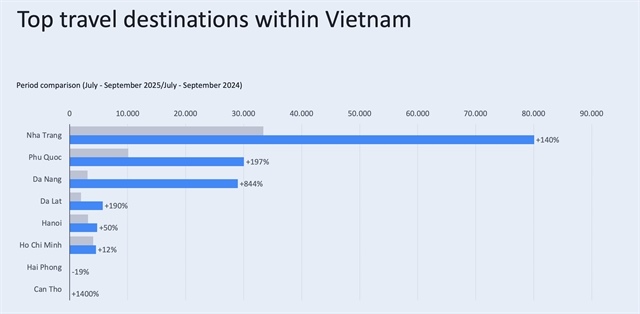Budget balance: improvements in 2012 and challenges in 2013
Budget balance: improvements in 2012 and challenges in 2013
Despite difficulties in 2012, Viet Nam managed to keep its budget deficit to GDP ratio at 4.8%, setting the premise for overcoming challenges in 2013.

2012: Heaps of difficulties leveled
Last year, Viet Nam faced huge difficulties in balancing the state budget, mainly due to lower growth in many economic fields and higher budget overspending.
The gross domestic product (GDP) of the year was estimated at 5.03%, a “reasonable” figure as described by the General Statistics Office (GSO) Director Do Thuc, experiencing an upward trend throughout the year with 4.64% in Q1, 4.80% in Q2, 5.05% in Q3 and 5.44% in Q4.
However, the whole-year figure is lower than the set plan of 6-6.5% and is the lowest rate since 2000, according to the GSO.
Specifically, the agro-forestry and fishery sector expanded by 2.72%, but its domestic and export prices were both reduced compared to 2011.
The industry and construction sector recorded a high productivity of VND110.3 million per worker, 4.3 times higher than that of the agro-forestry and fishery sector, 1.6 times than the service sector and 1.9 times over the average of the entire economy (about VND58 million per worker).
However, the sector grew by only 4.52%, lower than the economy’s GDP.
Meanwhile, due to bad debts in the banking sector and the frozen real estate market, the service sector’s profits sharply declined, though its growth rate appeared to be higher than the average, at 6.42%.
Revenue from import and export activities expected to account for 20.8%, a large proportion of the total collection.
On the other hand, the Government took measures to support the market in general and enterprises in particular, which included relaxing value added tax, rescheduling corporate debt payment, extending land use payment, and reducing corporate income tax.
Despite the aforementioned hardships, the total budget collection of 2012 still exceeded the estimate set by the National Assembly by 0.14% (estimated), reaching VND740.5 trillion, a year on year increase of 5.3%.
In particular, collection from domestic economy climbed by 29% against 2011 to VND494.6 trillion, and the net revenue from import and export activities reached VND153.9 trillion, up 11% over 2011.
Meanwhile, the budget spending exceeded the estimate by 0.11%, totaling to VND903.1 trillion, a rise of 14.6% against 2011.
All expenditures for development investment, regular spending, salary reform, additional financial reserves and provisions were covered.
Remarkably, payment of debts and international aid was secured and expenses for social security were not reduced but instead rose by 20%.
As a result, the budget overspending of 2012 reduced to 4.8% from 5.3% of the previous year, fulfilling the goal set by the National Assembly.
2013: Challenges remain to be resolved
The positive results of budget balance in 2012 served as the basis for the National Assembly and the Government to set a targeted budget deficit/GDP ratio at 4.8% for 2013.
As the main goals for 2013 lie in economic restructuring, growth model renovation and social security and welfare reassurance, the new year is expected to come with even more difficulties.
The Government shall have to incur a number of significant costs apart from the existing expenditures, such as the costs of handling major bottlenecks of the current economy, paying debts for capital construction, supporting enterprises and markets.
According to some experts, to fulfill the target of budget balance in 2013, it is necessary to focus on production, improving budget collection and saving budget spending.
In fact, enterprises must improve investment efficiency and labor productivity in order to increase GDP.
As 2013’s GDP is expected to rise to 5.5%, the target of Incremental Capital-Output Ratio (ICOR) must be reduced from 6.7 to 5.5, as a result of the decrease in the investment to GDP ratio.
Labor productivity growth rate is also expected to be higher at 2.7% compared to 2.3% in 2012.
In the coming year, the state, commercial banks and businesses need to work closely in handling bad debts, easing inventories and defrosting the real estate market in order to unleash credit and attract investment capital.
Meanwhile, the ratio between the total state budget revenue and GDP should be in line with the Government-set norm of 22-23% (reduced from 25.1% in 2012), in a bid to preserve resources for private investment.
Moreover, management of budget collection should be assured through avoiding tax evasion, smuggling, trade frauds as well as transfer pricing.
Finally, the budget savings should be enhanced while it is necessary to drastically fight against prodigality, corruption and budget waste.
tuoitrenews

























